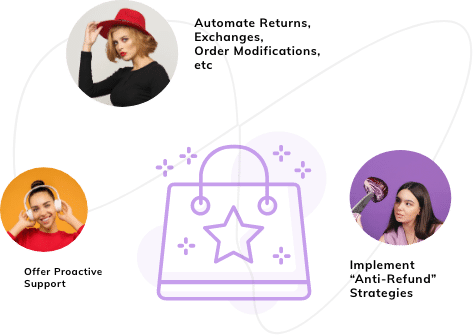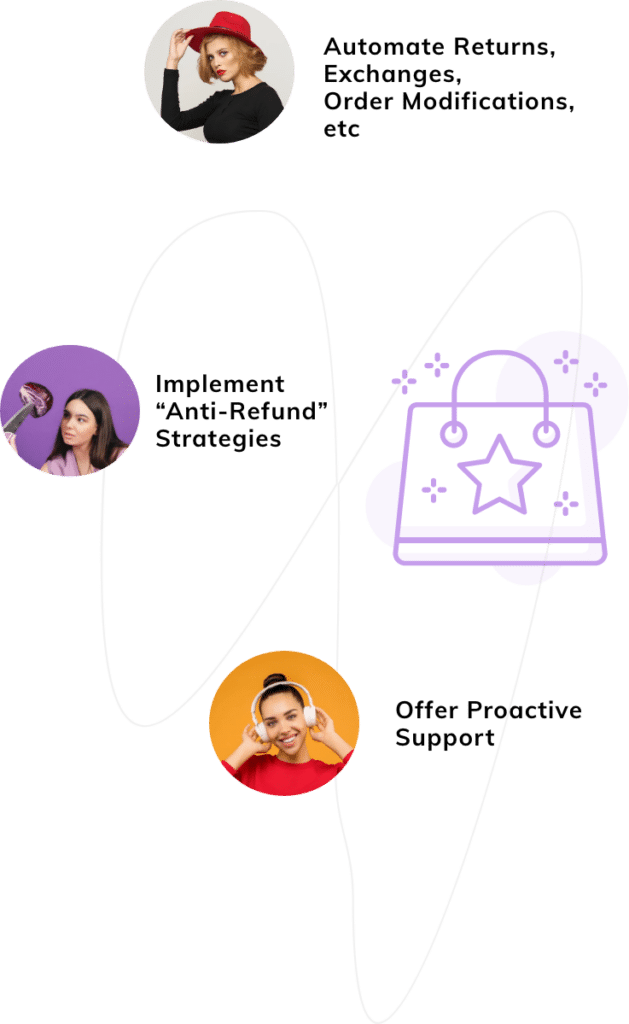62% of companies do not respond to customer service emails and of those thatare answered, 27% of them have the wrong response. It is why customer service response templates are crucial. They help shorten response time and ensure that even first-timers have the correct answer.

More than that, response templates guarantee that when a support agent faces a tricky situation, like an irate customer, the conversation remains fluid. Instead of a canned email or a mechanical telephonic reply, templates prioritize the customer and satisfy their demands within reason.
Let’s walk you through customer service response templates that every service staff can fall back on during awkward, sensitive, and stressful situations.
Also read: 15+ Key Live Chat Statistics For Customer Service Teams
Response Templates That Customer Service Staff Can Use In Different Situations
Excellent customer service is a tough balancing act, which makes it genuinely hard. Preparing ahead and equipping your customer support team with response templates makes it far easier.
Remember, flexible scripts to tackle any situation are the key to always having the right answer to any customer request, which equals good customer experience.
Two critical points for all responses, be it written or verbal, are to always start by greeting the customer with their name and sign off with your name.
When you need to ask the customer to share feedback.
Be courteous and demonstrate that the feedback is needed and appreciated.
“We’re continuously looking for ideas to improve and offer the best possible experience for our customers. Any feedback you share makes us better. So, we’d like to hear your thoughts on our product (name).
We also welcome suggestions and concerns. If you’re happy and satisfied with our service, please tell us about it, too! You can share your opinion on (review/survey site/ email).
Thank you for your valuable time. Have a great day!”
When the customer shares their feedback.
Use it as a chance to knit a stronger relationship with the customer.
“We’re glad you chose to purchase (product) from us and happy to hear you are pleased with it. We appreciate that you took the time to send us feedback.
It would make our day if you could please share your experience on (feedback survey platform). That way, your comments, and feedback reach the right people. It will also help improve your experience in moving forward.
We endeavor to deliver the best.
Thank you again!”
When the answer to a query is not known.
Never reply with, “we don’t know.” It’s not helpful to the customer. Instead, beg for more time and look for an answer.
“We regret that you aren’t happy with (address the complaint). Even though we work hard towards reaching full customer satisfaction, it’s clear we’ve gravely fallen short in your case.
That’s unacceptable. So, we’re researching the issue right now. We will get back to you within (specify time) with the right answer. In the meantime, if you’d like to speak to us, do reach at (phone number).”
When an item is not available.
 An outright rejection hurts. When a product or feature is not available, phrase it carefully. The compliment sandwich (compliment-bad news-compliment) works well.
An outright rejection hurts. When a product or feature is not available, phrase it carefully. The compliment sandwich (compliment-bad news-compliment) works well.
“Thanks for writing (or calling)! We genuinely appreciate your patronship. Unfortunately, the (product/item/feature) you’re interested in is not available yet.
We’ve added you to the list for (follow-up/restock). That way, as soon as it is available, we’ll promptly reach out to you.
To make up for the inconvenience, here’s a coupon applicable for your next purchase!”
When the customer is angry.
Do not let the customer’s anger blow your fuse. Acknowledge their feelings, apologize, and then promise a resolution.
“Thank you for reaching out, (customer name). We definitely understand your concern and are deeply sorry. To reach a resolution faster, we’re escalating your issue. Someone (include name, if possible) will take a closer look at what’s going on and how to fix it right away.
We know how frustrating this must be so we sincerely apologize for the inconvenience one more time.”
When you have to refuse the customer’s demands.
 When a customer asks for something, they come with high hopes. Refusal dashes hope and plunges satisfaction. Therefore, always use tact to break the news and follow it up with another option, where possible.
When a customer asks for something, they come with high hopes. Refusal dashes hope and plunges satisfaction. Therefore, always use tact to break the news and follow it up with another option, where possible.
“Hi (customer name) I’m answering regarding the (product/discount/feature) you requested. Regrettably, we are unable to deliver the (product/discount/feature) on your (required price/current plan). Please understand that (explain the reason product/discount/feature is not an option).
We know how disappointing this must be, and are happy to help you move to a different (plan/product) to take advantage of (X).
Do let us know if there’s anything else we can assist you with.”
When the customer launches a complaint.
The instinctive reaction to complaints is defense. As difficult as it may be, you need to remain understanding and considerate.
“We humbly apologize for your experience.
It’s vital for us to respond swiftly to our customers (address the nature of the actual complaint). It is unacceptable that you were put on hold for half an hour (replace with the real complaint).
Rest assured that your grievance has been passed on to (include the concerned person or team name). We’ll make sure that this doesn’t happen again.
Your time and feedback are appreciated. It’ll help us learn and grow. Thank you for your patience, and please let us know if you have any additional concerns.
Once again, we’re incredibly sorry for any inconvenience.”
When you/your team has committed an error.
It’s human to make mistakes. When it happens, be transparent with the customer. Accept the error and find ways to resolve it quickly.
“We’re genuinely sorry, (customer name).
We remorsefully admit that there has been an oversight on our part. (Explain the mistake here). We acknowledge it and apologize for any inconvenience it caused you.
We are working on fixing it promptly. It may take up to (time period) to resolve completely. We’ll send an update as soon as possible. To make sure it doesn’t happen again, here are some (explain preventative steps, if applicable).
We appreciate your patience and offer our sincerest regrets once again.”
When the customer asks to speak to the manager.
Be prepared to transfer the call to a higher-up, but first ask for one more chance to resolve the issue by yourself.
“I respect your request to talk to the manager, and I’ll be happy to transfer the call. But would you please allow me a last opportunity to solve this for you? That’s why I’m here.
If you’re still unhappy afterward, I’ll connect you to the manager immediately. Does that sound good?”
Last Words:
Even if you have skilled customer support in-house, some conversations can get pretty tricky. These response templates go a long way in resolving such situations. But a better way to make difficult conversations easier is to outsource customer support to professionals who tackle these scenarios every day.
At Helplama, we have people expert at holding approachable, helpful, and nuanced conversations with the toughest of customers. Get in touch to know more!






